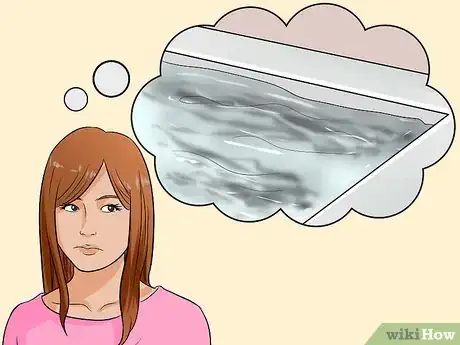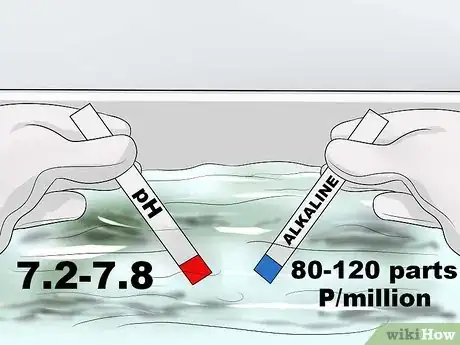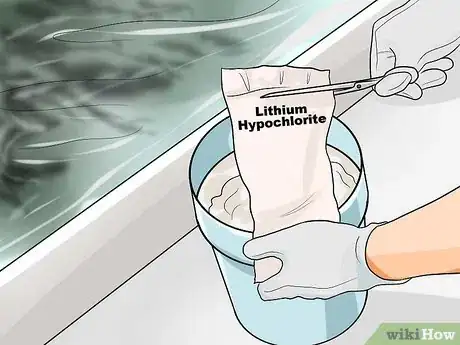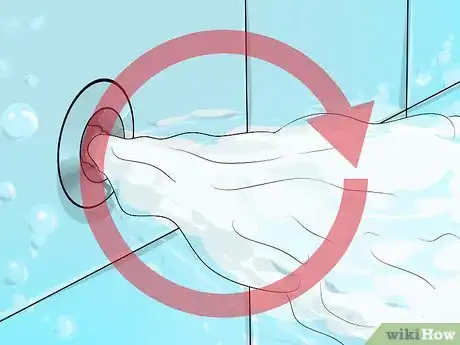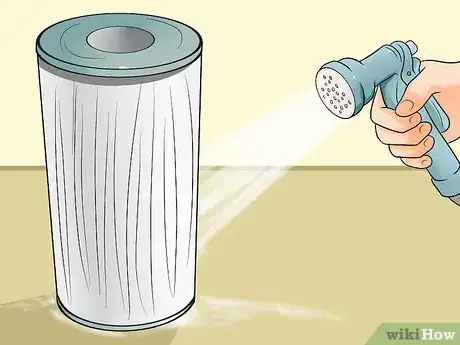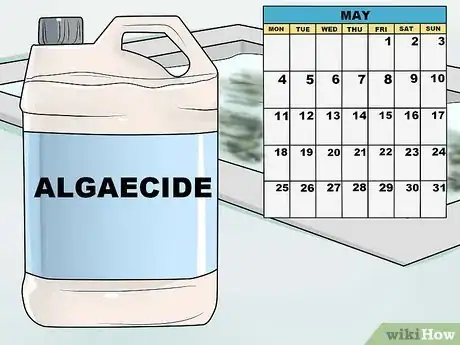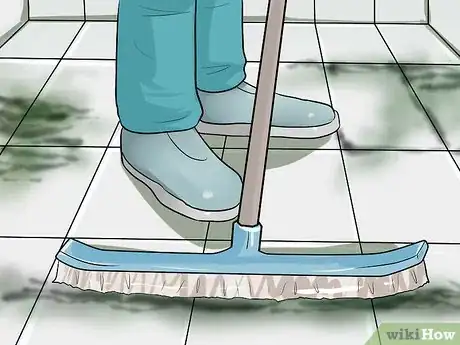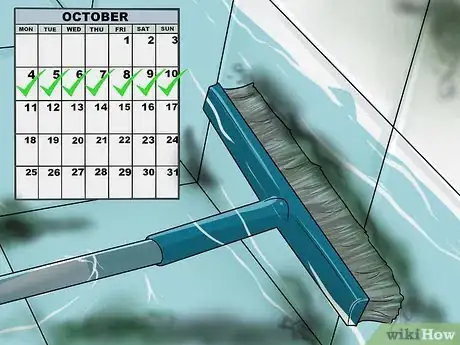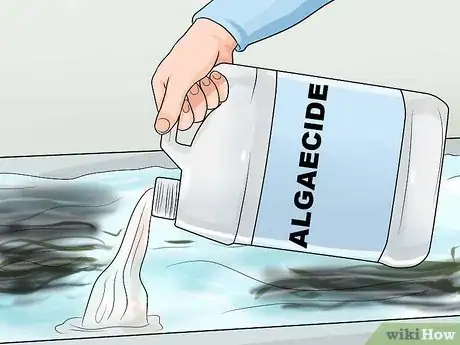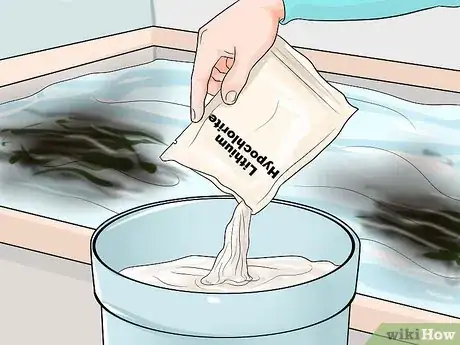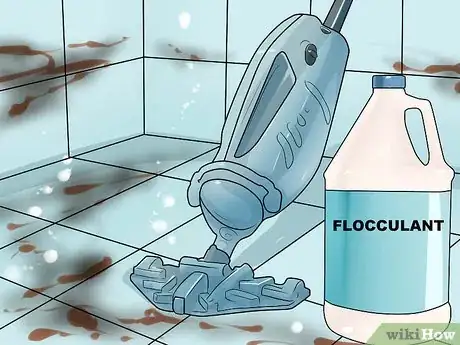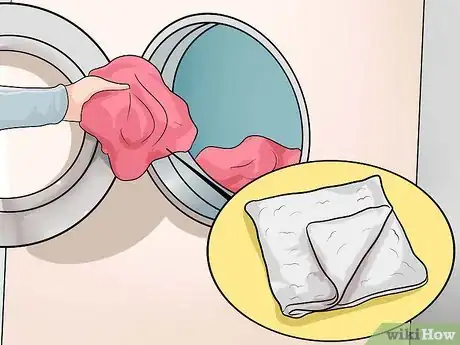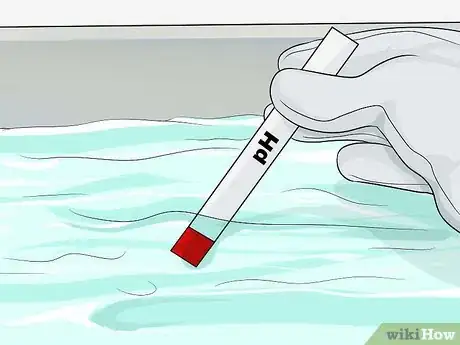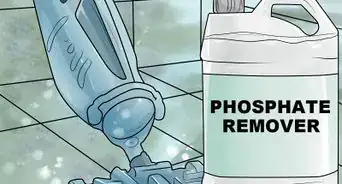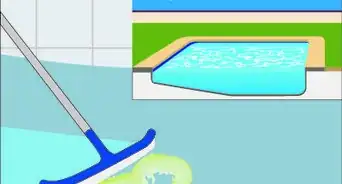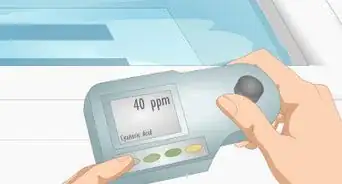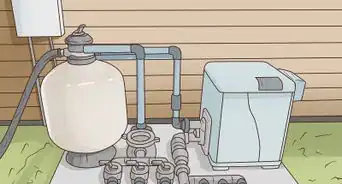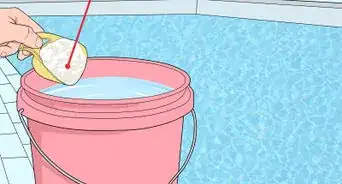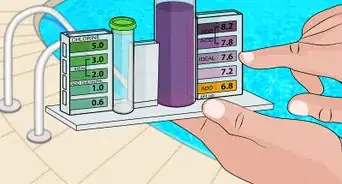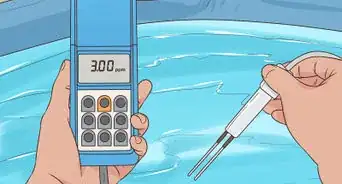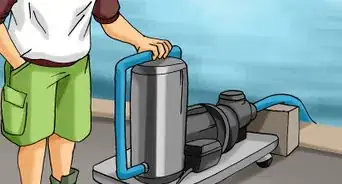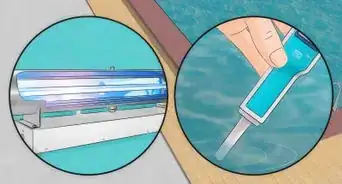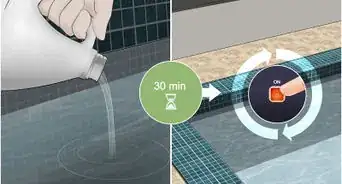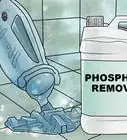This article was co-authored by wikiHow Staff. Our trained team of editors and researchers validate articles for accuracy and comprehensiveness. wikiHow's Content Management Team carefully monitors the work from our editorial staff to ensure that each article is backed by trusted research and meets our high quality standards.
There are 9 references cited in this article, which can be found at the bottom of the page.
wikiHow marks an article as reader-approved once it receives enough positive feedback. In this case, 92% of readers who voted found the article helpful, earning it our reader-approved status.
This article has been viewed 467,436 times.
Learn more...
Algae are diverse, simple plants that thrive in water. Of all the alga types and species on the planet, black algae can be the most difficult to treat and most resilient to remove from a swimming pool. Alga spores may always be present in your pool, but problems arise when the right conditions are present and the algae are able to bloom. There are ways to treat your pool and rid it of black algae, but prevention is always the best approach.
Steps
Preventing Black Algae
-
1Understand black algae. Like any alga species, black algae (which are really blue-green algae that look black) will grow quickly in warm water on a sunny day. Black algae are chlorine-resistant, because they have a protective outer layer that makes regular sanitization ineffective. While algae aren’t harmful, their presence can be a sign that other bacteria are present.[1]
- Other alga species that are common in pools are green algae, mustard or yellow algae, and pink algae, which is actually a bacterium.
- Algae tend to bloom in pools that have poor circulation, poor filtration, a high pH level, and a low chlorine level.[2]
-
2Test pool levels and balance chemicals often. Chlorine should be somewhere between 1.0 and 3.0 parts per million. The pH level should be between 7.2 and 7.8. Alkalinity should be between 80 and 120 parts per million. Test these three levels once or twice a week and correct as needed.[3]
- Calcium hardness should be tested monthly, and the ideal level is between 180 and 220 parts per million.
Advertisement -
3Shock the pool regularly. On a weekly or bi-weekly basis, shock your pool to remove chloramines (chlorine molecules that have attached to other particles) and raise chlorine levels quickly. There are four products you can use to shock your pool, and they are:[4]
- Calcium or lithium hypochlorite
- Granular chlorine
- Potassium peroxymonosulfate
-
4Circulate the water. Keeping the water in your pool moving is one of the best preventative measures for algae. Not only will it make it harder for alga spores to take hold, it will also ensure that sanitizing chemicals are evenly distributed. Monitor and clean the skimmer and strainer basket regularly.[5]
-
5Clean your filter. A clogged filter won’t work as well, and it will slow down the flow of water. In warmer months like July and August when algae have the best chance of blooming, run the pump for about eight hours over the course of the day.
-
6
-
7Brush and vacuum your pool on a weekly basis. Brushing will remove dirt and spores, and prevent algae from taking hold.[8] Brush the walls, floor, and steps of the pool. Once you’ve completed your brushing, vacuum the pool to dislodge and remove any spores that have settled on the bottom.
- Use a steel brush for concrete or plaster pools. Use a nylon brush for vinyl, fiberglass, acrylic, or painted pools.[9]
Treating Black Algae
-
1Brush the pool. Brush daily for a week with the proper brush for your pool, paying special attention to algae-affected areas. The protective layer that forms on black algae makes the algae otherwise impervious to regular sanitizers, so you must brush the algae to break through this layer so that chlorine and algaecides can kill the organism.[10]
- Black algae have deep roots that work their way into the walls, grout, and filters in your pool. If the roots aren’t destroyed, the organism will continue to grow back.
- Try rubbing the algae spots with a chlorine tablet after brushing.
-
2
-
3Shock the pool. After the algaecide has run its course, shock the pool. Continue your daily brushing, and after three days, shock the pool again.[13]
-
4Vacuum the pool. This will remove the dead algae and any debris that has settled on the bottom of the pool. To remove larger quantities of deal algae, consider adding an alum flocculant, which will cause the material to clump together for easier removal.[14]
-
5Clean and sanitize filters, equipment, and toys. Black algae can not only clog the filtration system and make it less efficient, but spores can also hide in the filters and bloom again when you least expect it. Wash all bathing suits and towels in the washing machine, and dry them in the dryer to kill any algae that may have attached to the fabric. Sanitize pool equipment and toys by scrubbing them with a bleach-based cleanser.[15]
-
6Test the water. You should do this regularly, but especially if you have recently adjusted the chemical levels of the pool.
Community Q&A
Did you know you can get answers researched by wikiHow Staff?
Unlock staff-researched answers by supporting wikiHow
-
QuestionCan algae in a pool hurt you?
 wikiHow Staff EditorThis answer was written by one of our trained team of researchers who validated it for accuracy and comprehensiveness.
wikiHow Staff EditorThis answer was written by one of our trained team of researchers who validated it for accuracy and comprehensiveness.
Staff Answer wikiHow Staff EditorStaff Answer
wikiHow Staff EditorStaff Answer -
QuestionIs silver-based algaecide better than copper-based for treating black mold?
 Community AnswerCopper has ions that kill plant life; silver doesn't. While silver can destroy vegetation, copper naturally deters and inhibits growth.
Community AnswerCopper has ions that kill plant life; silver doesn't. While silver can destroy vegetation, copper naturally deters and inhibits growth. -
QuestionIs black algae harmful to swim in if detected in pool before it gets treated?
 Community AnswerNo.
Community AnswerNo.
Warnings
- Use copper-based algaecides (and all pool chemicals) according to the manufacturer’s directions. High copper levels can cause staining, and can even turn blonde hair green. Handle all chemicals with caution.⧼thumbs_response⧽
References
- ↑ http://www.poolcenter.com/algae
- ↑ http://pooluniversity.org/green-algae-pool-get-rid-algae-pool/
- ↑ http://www.poolcenter.com/waterTestFaq
- ↑ http://www.swimuniversity.com/how-to-shock-your-swimming-pool/
- ↑ https://lesliespool.com/blog/top-10-algae-prevention-tips.html
- ↑ http://www.riverpoolsandspas.com/blog/bid/88483/5-Ways-to-Keep-Your-Pool-Algae-Free-During-the-August-Heat
- ↑ http://pooluniversity.org/green-algae-pool-get-rid-algae-pool/
- ↑ http://www.poolcenter.com/algae
- ↑ https://lesliespool.com/blog/top-10-algae-prevention-tips.html
- ↑ http://www.riverpoolsandspas.com/blog/bid/24528/How-to-Identify-Treat-and-Remove-Algae-in-Your-Swimming-Pool
- ↑ http://pooluniversity.org/green-algae-pool-get-rid-algae-pool/
- ↑ http://www.askalanaquestion.com/black_pool_algae.htm
- ↑ http://www.swimuniversity.com/how-to-kill-black-algae-in-your-swimming-pool/
- ↑ http://www.riverpoolsandspas.com/blog/bid/24528/How-to-Identify-Treat-and-Remove-Algae-in-Your-Swimming-Pool
- ↑ http://www.swimuniversity.com/how-to-kill-black-algae-in-your-swimming-pool/
About This Article
To treat black algae in your swimming pool, start by brushing the sides and bottom of your pool to break up the algae so it's easier to remove. Next, add a copper-based algaecide to the water and aim the water-return jets at the algae patches. After the algaecide has run its course, shock the pool by adding granular chlorine to kill the remaining algae, then shock it again after 3 days. Finally, vacuum the pool to remove the dead algae and wash the pool filters and equipment with bleach so it doesn’t grow back. For more tips on how to keep black algae from coming back, keep reading!
